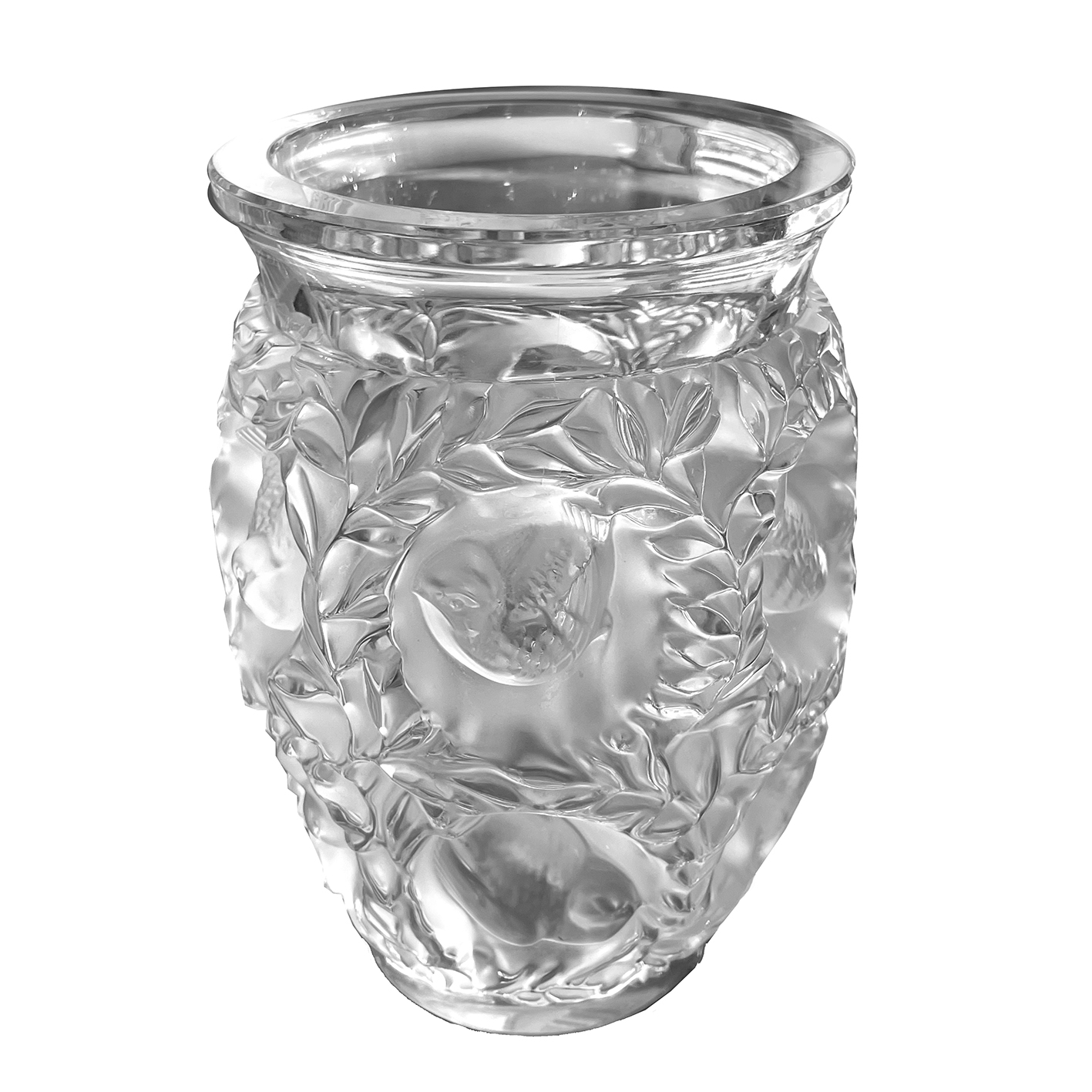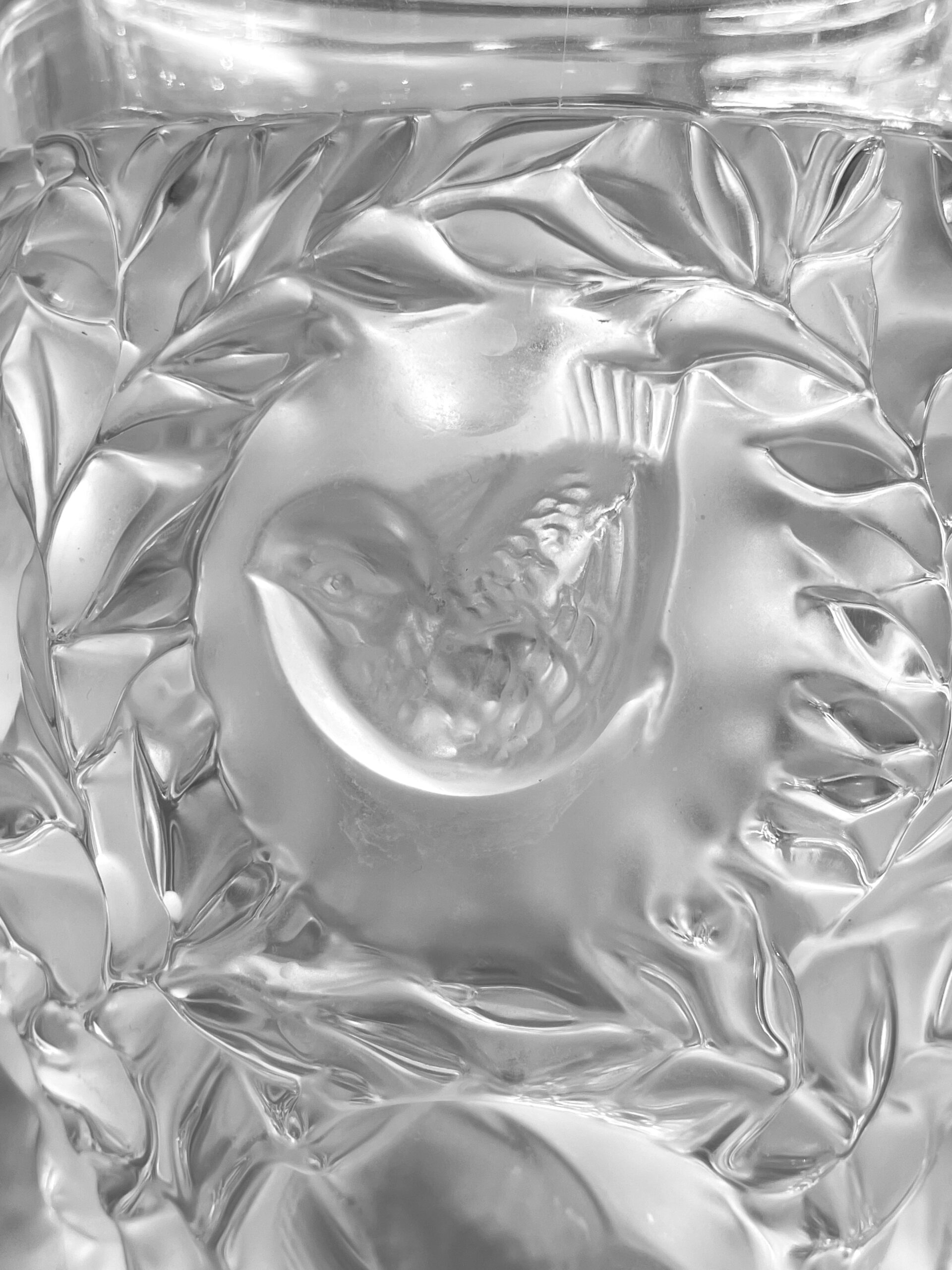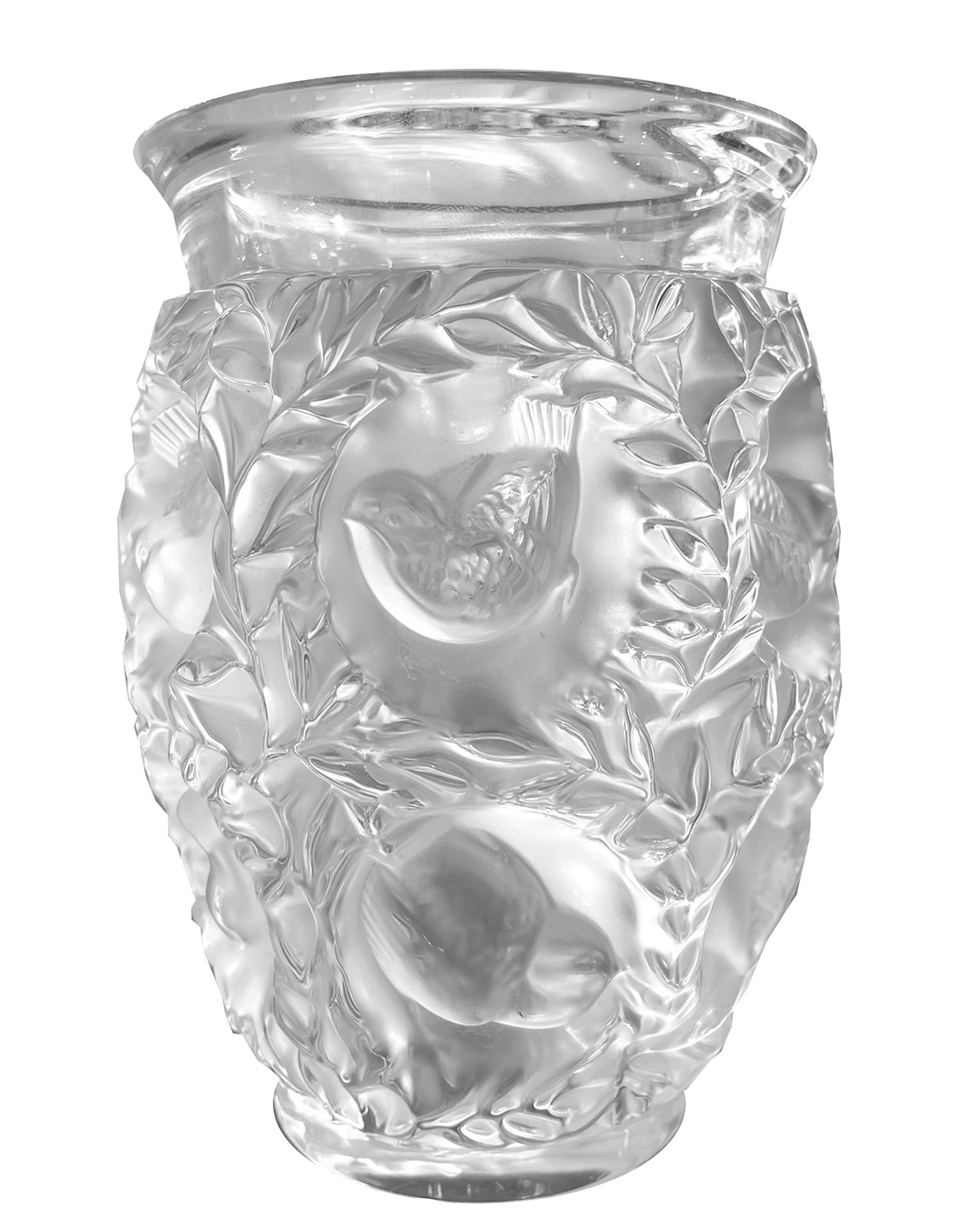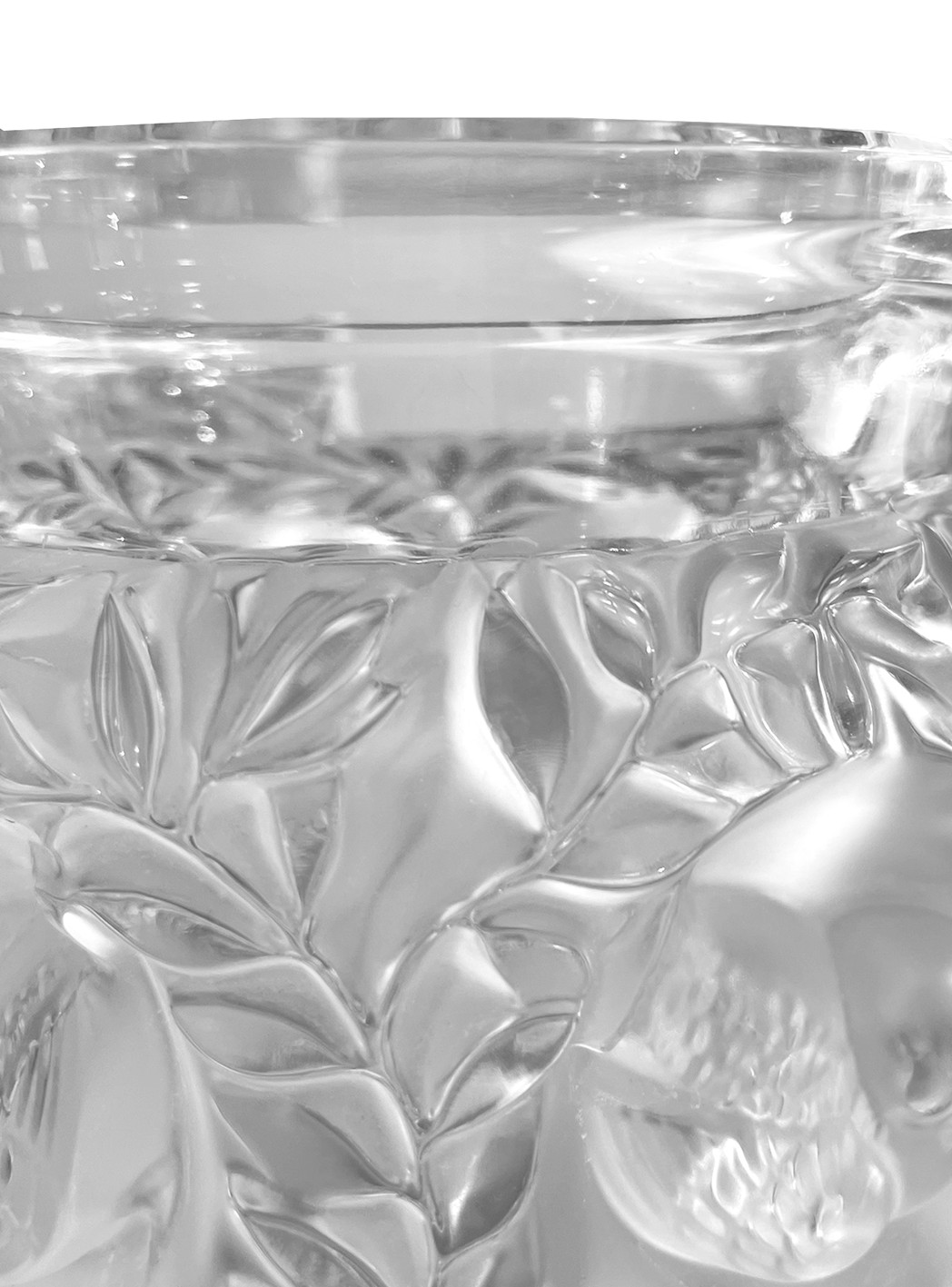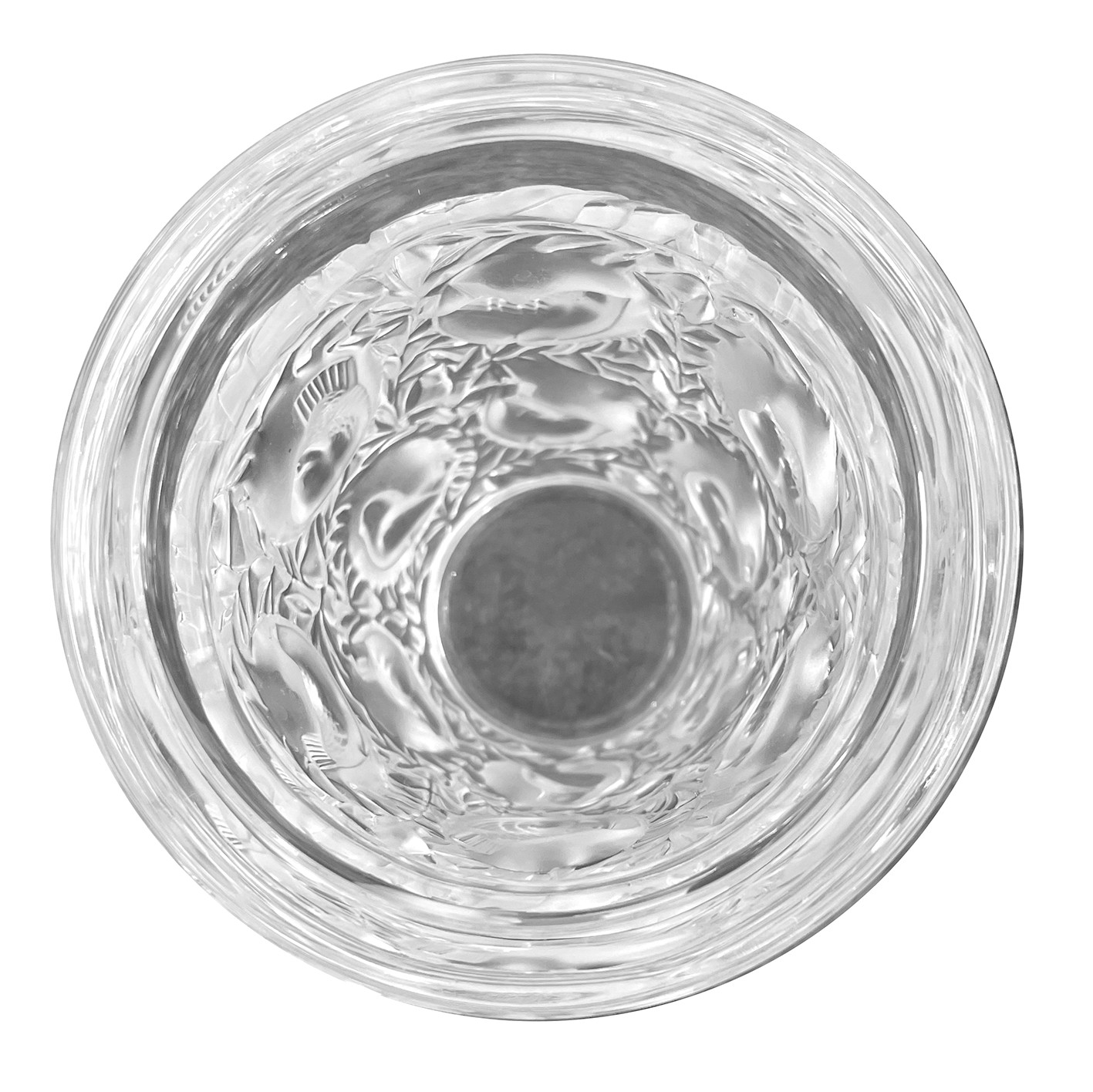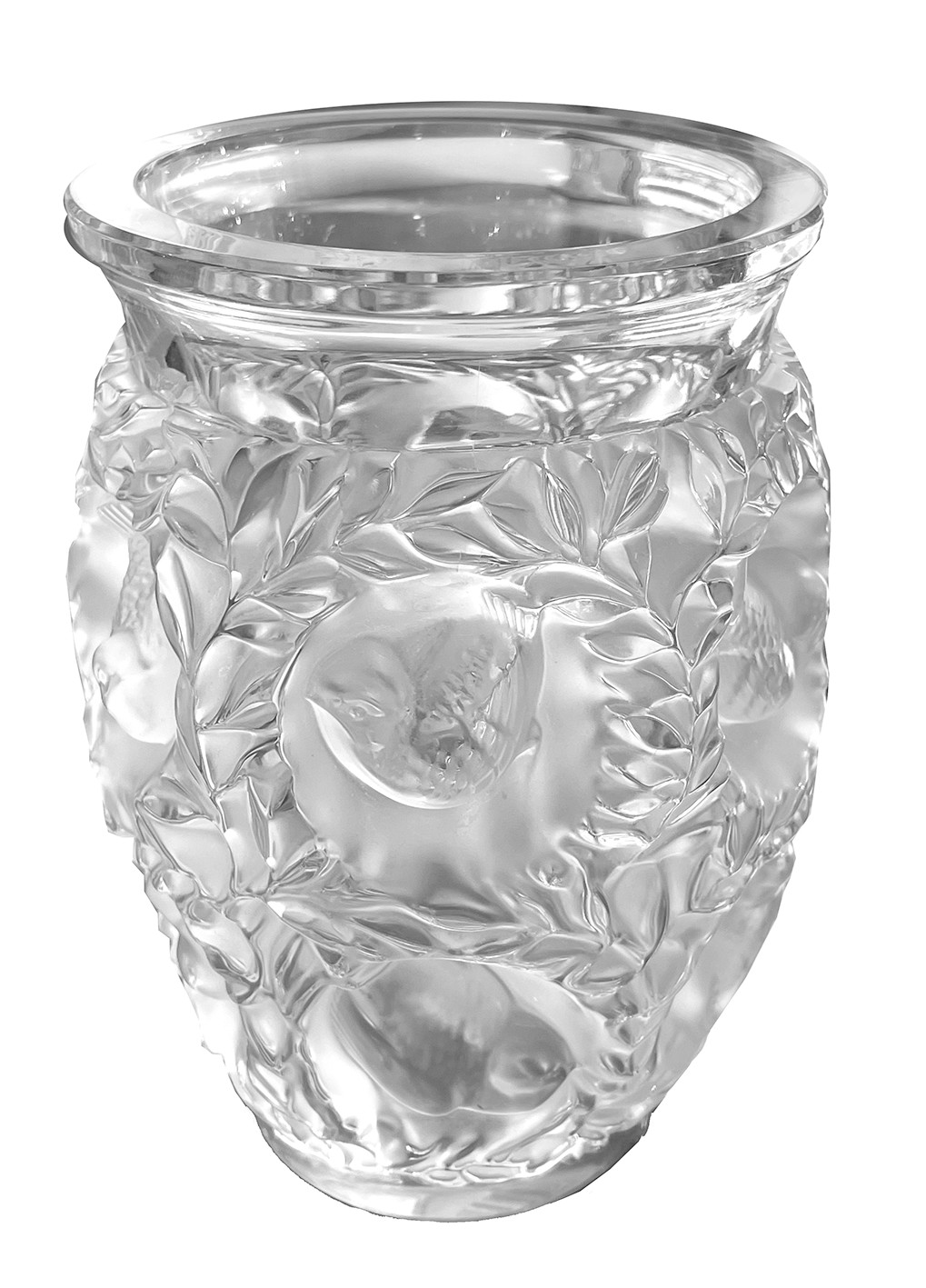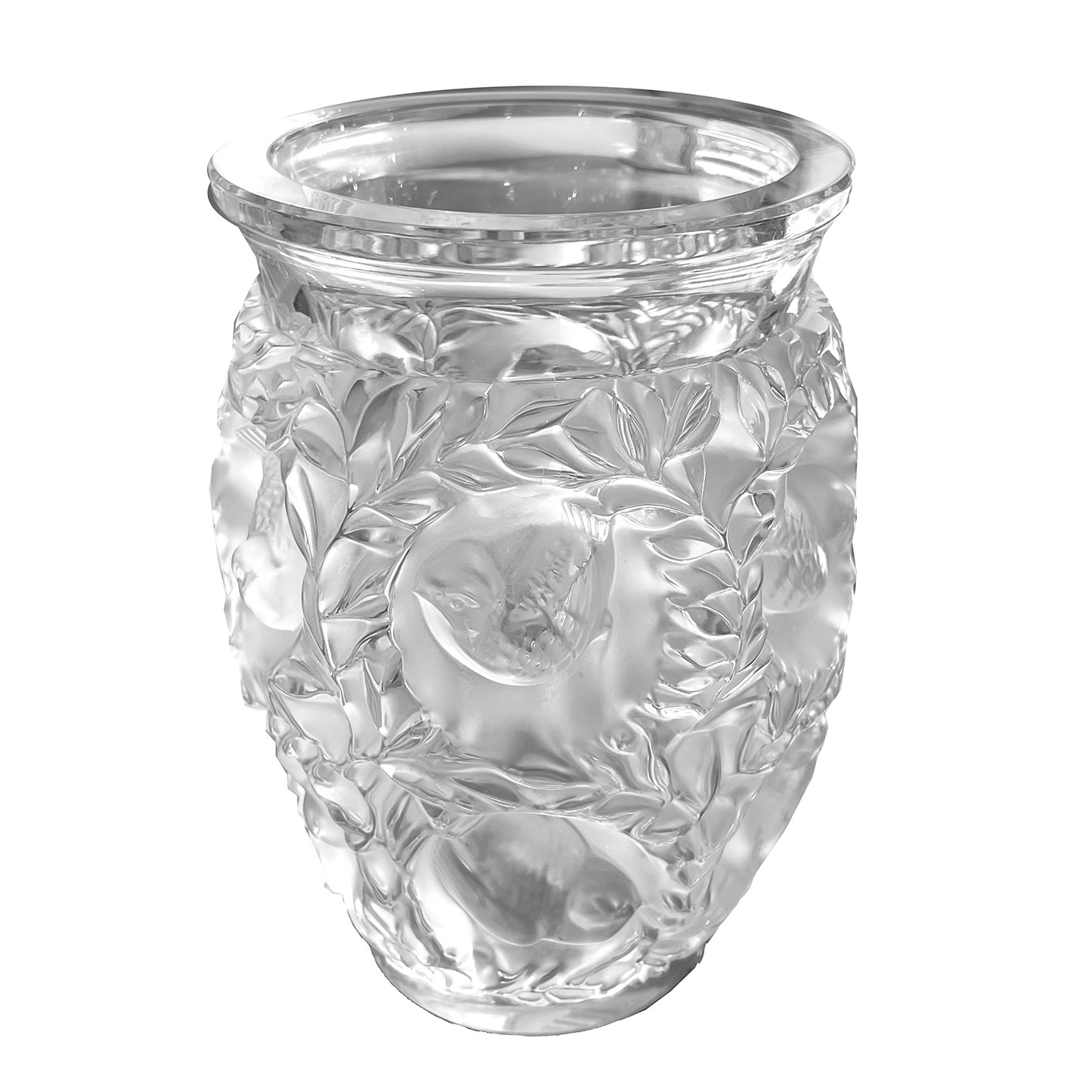Signed Art Deco Vase “Lalique”,sold
Nr. 2737 |
Signed Art Deco Vase “Lalique”
France, circa 1960.
Floral glass segments and birds decorated with leaf segments.
Designed by Réne Lalique in 1939. Very good, unused condition.
Height: 17 cm | Diameter: 11 cm at the top of the wreath. Clear crystal glass.
Visit the Lalique Museum in Wingen-sur-Moder
Lalique Vase

The artist René Lalique
Childhood, Youth, and Education
René Lalique was born on April 6, 1860, in the small village of Ay in Champagne, the son of a sales representative. In 1862, the family moved to the Paris region.
In 1872, Lalique began studying drawing under the teacher Jean-Marie Leguien at the Collège Turgot. Over the next four years, he also learned jewelry techniques and continued his drawing studies at the École des Arts Décoratifs in Paris. His father died in 1876. That same year, Lalique began an apprenticeship with Louis Aucoc (1850–1932), a respected, exclusive, luxury jeweler in Paris. At the same time, he continued his education at the École des Arts Décoratifs. From 1878 to 1880, he spent two years studying at Sydenham College in London. During these two years, he developed his characteristic drawing style, oriented towards natural forms, which would later also influence his jewelry work.
The Young Artist
Returning to Paris, he began his professional career as a draftsman and designer of jewelry designs for various jewelers, partly as a freelancer and partly as an employee. His completely innovative designs found buyers among the top Parisian jewelers, including Cartier. In 1884, he founded the company Lalique & Varenne together with the jeweler Varenne. His drawings were exhibited at the national decorative arts exhibition, the Salon National des Arts Industriels, in the Louvre.
Towards the end of 1885, Lalique took over an existing decorative arts workshop. Now he was able to create his own jewelry. Contrary to popular belief, he attached little importance to precious materials such as gold, pearls, and gemstones. Above all, the value of artistic work was important to him. He also incorporated materials such as enamel, ivory, horn, semiprecious stones, common stones, and glass into his work.
In 1886, he married Marie-Louise Lambert. They had a daughter, Georgette.
Despite the simple materials, his jewelry was well-received by the public. In 1889, his works, without mentioning his name, were included in the product range of the renowned jewelry store Vever et Boucheron. In 1890, he opened his own store in a prestigious location.
On May 4, 1892, Suzanne, the daughter from his extramarital relationship with Augustine-Alice Ledru, was born. Suzanne married the photographer Paul Haviland in 1917.
From 1893, works by Lalique and Lalique’s company were present at major exhibitions and repeatedly won important prizes. In 1894, he began creating stage jewelry for the actress Sarah Bernhardt.[1] His works were sold in Samuel Bing’s shop, L’Art Nouveau, whose name became established as the name for the French form of Art Nouveau.
An Art Nouveau Artist
He found the themes and forms for his work in Art Nouveau motifs, its curved forms and its natural motifs such as birds, especially swans, and plants. From around 1895, when he was no longer dependent on supplying Parisian jewelers, his own, unconventional style, including that of a medalist,[2] came to full expression.
On September 1, 1900, Marc, the second child of his relationship with Augustine-Alice Ledru, was born. In 1902, Lalique married Augustine-Alice. That same year, he had a large house built in Paris that served simultaneously as his home, workshop, and sales exhibition.
In 1904, his workshop was represented at the Louisiana Purchase Exposition in St. Louis. From 1908 onwards, he increasingly turned to glass art. He made his first perfume bottles for the perfumer François Coty. He rented the glass studio in Combs-la-Ville.
In 1909, his wife, Augustine-Alice Lalique-Ledru, died. In December 1910, Georgette, the daughter from his first marriage to Marie-Louise Lambert, died.
He began his professional career as a designer and illustrator of jewelry designs for various jewelers, partly as a freelancer and partly as an employee. His completely innovative designs found buyers among the top Parisian jewelers, including Cartier. In 1884, he founded the company Lalique & Varenne together with the jeweler Varenne. His drawings were exhibited at the national decorative arts exhibition, the Salon National des Arts Industriels, at the Louvre.
Towards the end of 1885, Lalique took over an existing decorative arts workshop. Now he was able to create his own jewelry. Contrary to popular belief, he placed little importance on precious materials such as gold, pearls, and gemstones. He was primarily concerned with the value of the artistic work. He also incorporated inexpensive materials such as enamel, ivory, horn, semiprecious stones, common stones, and glass into his work.
In 1886, he married Marie-Louise Lambert. They had a daughter, Georgette.
Despite the simple materials, his jewelry was well-received by the public. In 1889, his works, without mentioning his name, were included in the product range of the renowned jewelry store Vever et Boucheron. In 1890, he opened his own shop in a prestigious location.
On May 4, 1892, Suzanne, the daughter from his extramarital relationship with Augustine-Alice Ledru, was born. Suzanne married the photographer Paul Haviland in 1917.
From 1893 onward, works by Lalique and Lalique’s company were present at major exhibitions and repeatedly won important prizes. In 1894, he began creating stage jewelry for the actress Sarah Bernhardt.[1] His works were sold in Samuel Bing’s shop, L’Art Nouveau, whose name became established as the name for the French form of Art Nouveau.
Source: Wikipedia
Here another great work from Gallé, a signed Vase.
Art Deco at RSA Wiesbaden
You can find more Art Deco cabinets, Art Deco chests of drawers and Art Deco lamps in my shop in Wiesbaden. Regine Schmitz-Avila – your specialist for French Art Deco furniture and art objects from around 1930.
